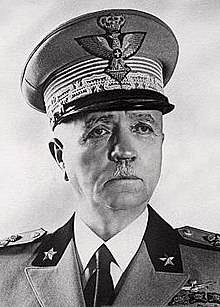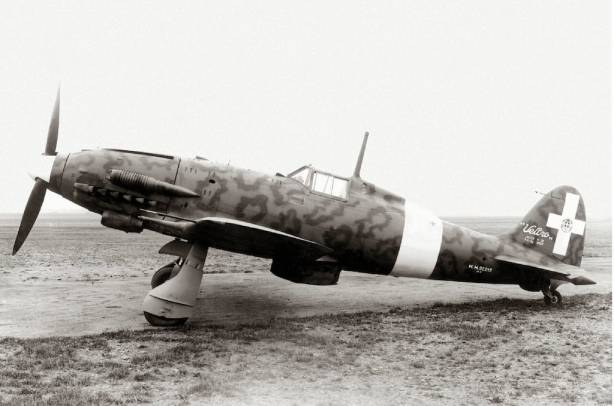Exhausted and depleted by three years of war, the Regia Aeronautica was caught by surprise by the capitulation of Italy of September 1943. Dispersed but not broken, pilots and crews made their choices and fought on opposing sides for until April 1945.
Chaos on the 8th of September
 In the evening of the 8th September 1943, the voice of Marshal Badoglio, broadcasted via radio, announced to a shattered Italy the armistice signed with the Allies. Italian armed forces had to cease any hostility against the allied forces but had to respond to “attacks from any other origin”. The reference to the Germans was implicit. The announcement caught everybody by surprise, with a sense of jubilee prevailing, together with the hope to come home soon.
In the evening of the 8th September 1943, the voice of Marshal Badoglio, broadcasted via radio, announced to a shattered Italy the armistice signed with the Allies. Italian armed forces had to cease any hostility against the allied forces but had to respond to “attacks from any other origin”. The reference to the Germans was implicit. The announcement caught everybody by surprise, with a sense of jubilee prevailing, together with the hope to come home soon.
The chiefs of staff of the armed forces had received some vague information on the new situation already on the 4th of September, and they were generally instructed on a plan to face a German retaliation (plan O.P. 44). According to the plan, all remaining fighter squadrons had to converge on the airfields around Rome, while bombers and recognizance aircraft had to converge on Sardinia. Control of airfields had to be maintained and German personnel had to be neutralized. The problem was that the high secrecy of these dispositions was kept till the very last moment, compromising any chance of success. On the other side, the Germans were prepared for this new scenario since July and easily overrun Italian forces in several locations, capturing aeroplanes and personnel. In those days of chaos, the men of the Regia Aeronautica made their choices, several of them just tried to reach their homes while others decided to follow the orders of the Supreme Command, while others joined the Germans.
The “new” Regia Aeronautica
Right after the announcement of the armistice, the King and the Government fled to the South, in the areas controlled by the Allies. Notwithstanding the chaotic situation, some units managed to support, at the best of their abilities, Italian troops opposing the Germans in the Balkans and the Greek islands. Some Reggiane 2002 flew sorties against Wehrmacht forces attacking Cephalonia.
In early October 1943, the government officially declared war on Germany and Italy was recognized by the allies as a Co-belligerent nation. In this new phase, the Regia Aeronautica was re-organized and on the 15th of October, it could count on the following forces:

Macchi C.205V
23 fighters Macchi C.205V, 8 fighters Macchi C.202, 13 fighters Macchi C.200 and 3 fighters Reggiane 2001 and 15 fighter-bombers Reggiane 2002. There were also 3 outdated C.R.42 biplanes and around 20 triple engine bombers of different types. This modest force was called by the Allies “Italian Co-Belligerent Air Force” (ICAF). In 1944 the allies handed over 170 fighters P-39 and 53 Spitfire Mk. V, together with 50 medium bombers Martin Baltimore. The Regia Aeronautica (ICAF for the Allies) did not have a remarkable operational history, limited by its scarce operative autonomy and equipment. The Italians were allowed only to fly over the Balkans in support of the Yugoslav partisans and isolated Italian units.
The Aeronautica Nazionale Repubblicana (ANR)
On the 23rd of September, a shattered Mussolini announced via radio the constitution of a new Fascist State (RSI) in German-controlled Italy. This was a puppet-state in the hands of Hitler, useful to run the administration, public order and provide some additional troops. In this context, colonel Ernesto Botto, a veteran pilot of the Regia Aeronautica, worked to reform a group of pilots and aircraft to continue fighting alongside the Germans and against the “traitors” of Italy (namely Badoglio and King Vittorio Emanuele III). Aces like Adriano Visconti and Ugo Drago answered Botto’s call and an on the 23rd November 1943, the RSI government formed the “Aeronautica Nazionale Repubblicana” (National Republican Air Force).
Initially, it was quite challenging to create a capable air force because the Germans captured approximately 1,000 Italian aircraft remaining in German-controlled areas. Towards the end of 1943, Germany returned several Macchi C.205V to the Italians to form the Iº Gruppo Caccia, which debuted over Turin on 3 January 1944.
Next came the Squadriglia Complementare Montefusco, equippied with Fiat G.55 and the IIº Gruppo Caccia, formed in April, 1944. The IIIº Gruppo Caccia formed in summer 1944, but never achieved combat status.

Fiat G.55
During its short-lived career, the ANR relied mainly on C.205V, Me.109G-F and especially the Fiat G.55, a great fighter aeroplane and the cheapest to produce in the last generation of Italian WW2 fighters. The activities of the ANR from 1944 until 1945 essentially focussed on the interception of allied bombers flying over northern Italy. However, their few numbers could do little against the Allied air dominance.
The ANR also formed a unit of torpedo-bombers (the Faggioni group), equipped with S.M. 79, that entered in action during the Allied landings in Anzio.
The last mission of ANR fighter was conducted on 19 April 1945 over Turin, 6 days after the end of hostilities in Italy.
Sources
Alderighi, M. (2020 ). La Regia Aeronautica al bivio dell’8 settembre. Aerei nella Storia, 10-23.
Sgarlato, N. (2000). La Regia Aeronautica nella II Guerra Mondiale. Delta Editrice.
Sgarlato, N. (2020). Guerra Aerea in Italia. Delta Editrice.